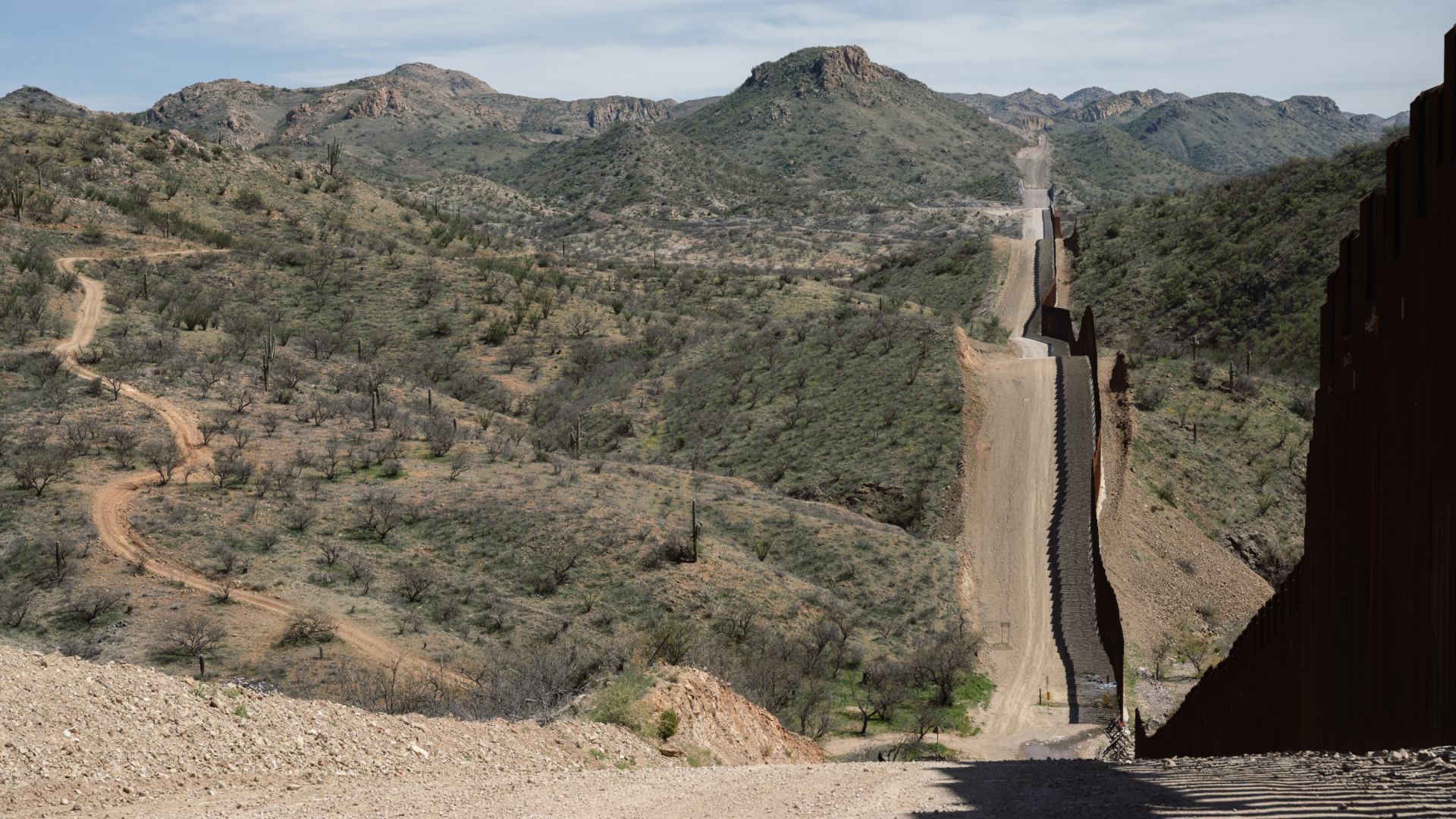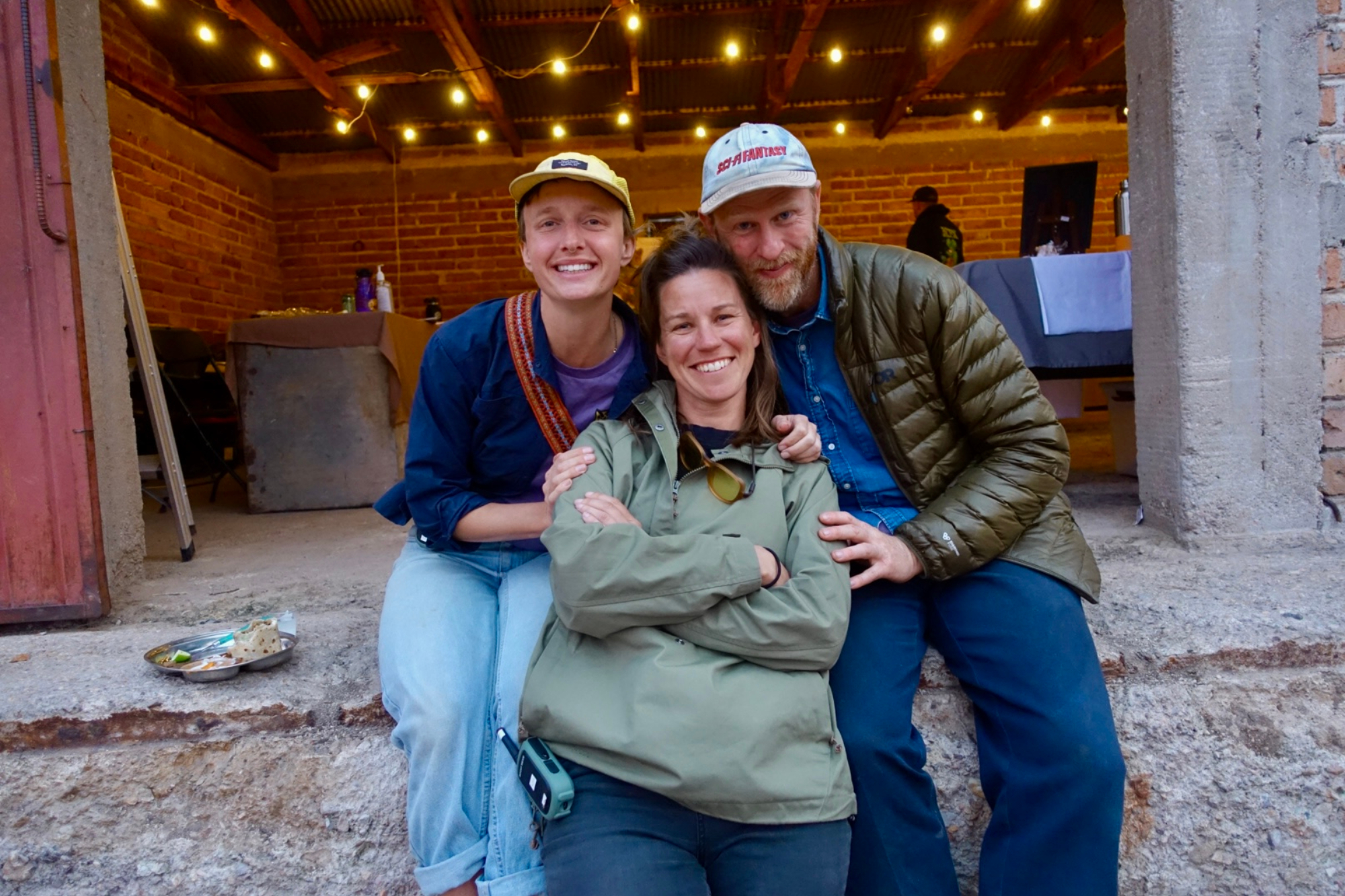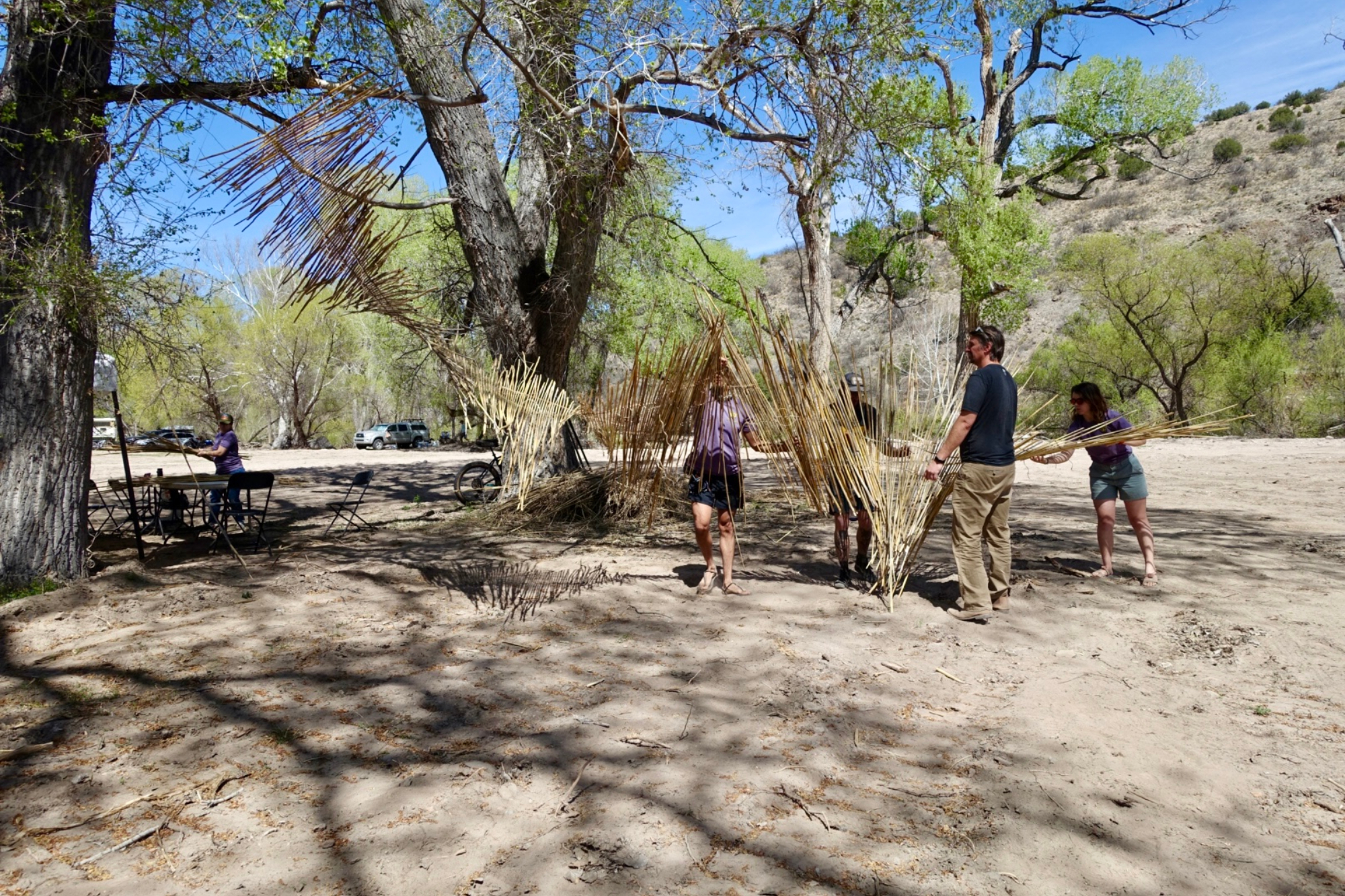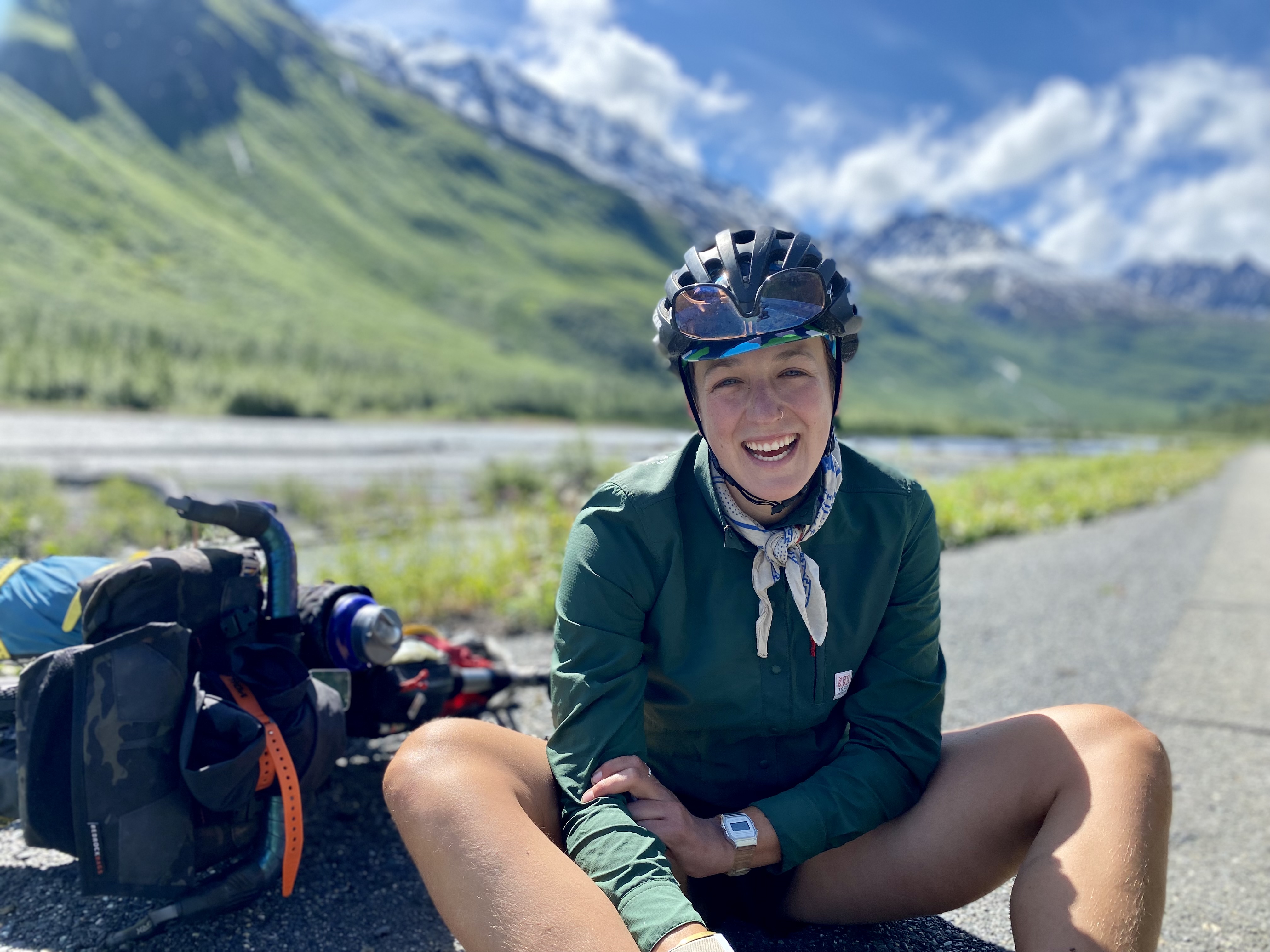Exploring the Mexico-US borderlands: 3 days riding among the mountains the border wall blasted through
U.S. policy has quite literally blasted through mountains to build a border wall - the Ruta del Jefe explores the land, with a focus on education and conservation


Sarah Swallow's Ruta del Jefe did not, in fact, start like any other bike race. Sure, the early wake-up to claim a coveted entry felt familiar, but from there on, the journey led us through entirely new terrain.
For example, upon registering, everyone agreed to fundraise or donate a minimum of $300, we then filled out forms for caravans to cross the U.S.-Mexico border together, and I started researching the migrating birds in this part of the world. Cycling comes second here, and that was exactly the intention of Ruta del Jefe.
This year's Ruta del Jefe, an event held biannually at the end of March, was situated just a few kilometers south of the U.S.-Mexico border near the small town of Agua Prieta. It's so remote that we were instructed to drive to kilometer marker 89 and then turn south down a four-wheel drive dirt road ripe with stream crossings into the Cuenca los Ojos protected area.
Cuenca los Ojos is a 121,000-acre conservation area stretching alongside the U.S.-Mexico border region, mirroring similarly protected lands on the U.S. side of the border. The mission of Cuenca is to protect, restore and rewild the biodiversity of the U.S.-Mexico borderlands. Conservation efforts started here in the mid-1990s and has only picked up, bringing back water, soil and life to the region.
Swallow sculpted this event around honoring and supporting the complexities of this contentious location. Geopolitical issues aside, this land is one of the most biodiverse regions in the world thanks to the confluence of the Rocky Mountains and Sierra Madre Occidental, as well as the Sonoran and the Chihuahuan deserts. Plants, animals, watersheds and people converge here, each contributing to the complex intricacies of the region.
For instance, this region is the northernmost habitat for the thick billed parrot, ocelots and jaguars use this area in their migration routes, and the N’dee/N’ee/Ndé indigenous people have lived here since 1200 AD. But in modern times, U.S. policy has quite literally blasted through mountains to build a border wall erected in response to the migrants who travel through this land.
Over the course of three days, I had the privilege of joining 99 other event registrants in experiencing this dynamic environment first hand.
The latest race content, interviews, features, reviews and expert buying guides, direct to your inbox!
Comunidad / Community

On Thursday, I crossed the border with my dad and his partner. Thankfully, Spanish words I hadn’t spoken in years began to flow. “¿Estos son tus padres?” “Pues.. este es mi papa, y este es la novia de mi papa.” ('Are these your parents?', 'Well...this is my dad and this is the girlfriend of my dad.')
I recognized my privilege in getting a little laugh out of the border guard, and thanked him for the cursory search of our truck.
We arrived at Rancho Nuevo in Cuenca los Ojos and met volunteers along the way, who warned us that four-wheel drive would be necessary for crossing the last creek.
Once arrived, we hopped into the first community ride of the long weekend, an 11-mile route into the shadowy mountains and up the river — the first of many ankle-deep stream crossings to come. Nearly 40 of us rode together that day, exchanging names and creeping into conversation.
A few hours later we lined up for dinner, each person holding a plate they’d brought from home. We ate piles of delicious Sonoran food under the tent packed with tables and already dusty faces.
The evening concluded with two short films, one featuring chilling footage of jagged, 1500-foot mountains exploding as dynamite blasted a deep trench through them to make way for a 30-foot wall. The second film showed the pain and hope of waiting for an immigration case to be heard in the attempt to receive a green card. I cried at the end of both films. No one clapped. We sat silently as the weight settled and then carried the heaviness back to our tents.
Educación y Activismo / Education and Activism

Friday started with morning yoga, bird walks, Sonoran coffee and another drippy pile of delicious food. I made my way to a sculpture-making workshop with artist Dave Tarullo, where we collectively created a hanging sculpture from the reeds in the area.
In the afternoon, we embarked on second community ride. This time I worked up the courage to ask some riders from Mexico City if I could practice my Spanish with them. They grinned and laughed at me while I stumbled over conjugating past tense verbs.
After the ride, more workshops were held. One about Café Justo's efforts to create sustainable jobs in coffee growing and selling, another about the cacao industry and a third about agave spirits.
After dinner that evening, Swallow and her team began strategically piecing together the reason for our presence and the purpose behind our collective $45,000 fundraising goal.
Valerie Godron, the daughter of the woman who started Cuenca Los Ojos showed us black and white images of her mother standing in an eroded streambed, now restored with vegetation, rock walls and a resident beaver.
We listened to Juan Longoria of the N’dee/N’ee/Ndé people teach us about their efforts to add their language to the international library of indigenous languages.
We heard Rodrigo Sierra-Corona express his love of the local education programs bringing kids into the restored lands.
We listened to Jacobed Gallegos speak to the crucial and deeply community oriented efforts of Frontera De Cristo in Agua Prieta, including the immigrant child who asked members of the cartel to leave, and they did.
We collectively gasped when Deigo Valles shared the artwork he made to advocate for keeping the Rio Casas Grandes a free river.
At nearly 10 p.m., Ganesh Marin-Mendez finished out the evening with footage from the dozens of cameras he had placed along the wildlife corridors, each tracking the activity of migrating animals and the effects of the border on their movement.
Aventura / Adventure

Saturday morning is typically the pinnacle of a bike event weekend. However, on this Saturday we arrived for communal breakfast surrounded by new friends, discussing the day's route in brief moments, but mostly discussing the agave plants, the whiskered screech owl someone heard the night before, and the fact that Café Las Dos Lupitas was actively roasting coffee beans on a nearby fire to be ground and turned into coffee on the spot.
Like most events, there were different route options to suit riders' abilities and preferences. We left camp at a soft 9 a.m., moving upstream along the river bed. With wet shoes, yet again, we slowly split off onto our respective routes. We smelled the first aid stations frying bacon before we saw them and took our time fueling up. At the next aid station someone in a jaguar costume danced and beckoned us across another stream to the oasis of peanut butter and jelly sandwiches.
There was no winner on this ride, no times, no prizes. It also wasn’t a casual group ride as I rode with friends at an expeditious pace, leap-frogging my dad and his partner for a full six hours. However, we were, as Swallow said, “less focused on the individual effort and more focused on the collective experience.”
On the final descent, I gasped at one last view then pulled over and sat still for a few minutes. I watched the river flow below us and the my eyes followed the wiggle of bright green trees in its wake, I saw the Cuenca Los Ojos staff setting up our dishwashing stations with soapy water, I wondering where the nearest black bear or jaguar was and reminded myself it was best if no one saw them. I watched the dried red ocotillo flowers wave in the breeze. My legs were tired, but the miles held meaning.
Swallow had said that “Ruta del Jefe riders understand the physical and social environment that they have the privilege to ride through.” She was right, my mind spun with what I’d learned: the indigenous words, the view of the border wall, the confluence of mountains and deserts. I let the fragility and the toughness of this region both be true and present.
That evening we began to eat one final dinner together before folks started peeking out of the tent, noting the clouds turning pink. The glow seeped into the tent and ushered everyone out. Holding plates of tamales, we made our way outside, looking up and grinning at the cotton candy clouds. No more than 15 minutes later, the final few riders made their way into camp welcomed by the cheers of a hundred people.
The best weekends inevitably finish with dancing and Ruta del Jefe was no different. DJ Fabrica de Rosas played songs the Mexican citizens knew every word to and we created clouds of dust and passed around bottles of local sotol. We jumped and grinned and wiggled our tired bodies, remembering how profoundly special it was to be surrounded by community in a deeply overlooked and undeniably magical place in the world. In that moment, it all felt so good.

Emily Schaldach has taken to writing and riding, both to near obsession. Her favorite moments are riding above tree-line, racing CX, or coaching high school mountain bikers. Schaldach writes a weekly Substack newsletter called Too Many Socks and has written for VeloNews, Gear Patrol and Experience Life. Schaldach was born in Durango, Colorado and currently lives in Reno, Nevada with her two best friends and big old black lab named Hoola. She races for the BitchnGrit Cycling Team with Firefly Bikes and TenSpeed Hero - creating a dream dynamic of artwork and hardwork on every ride.